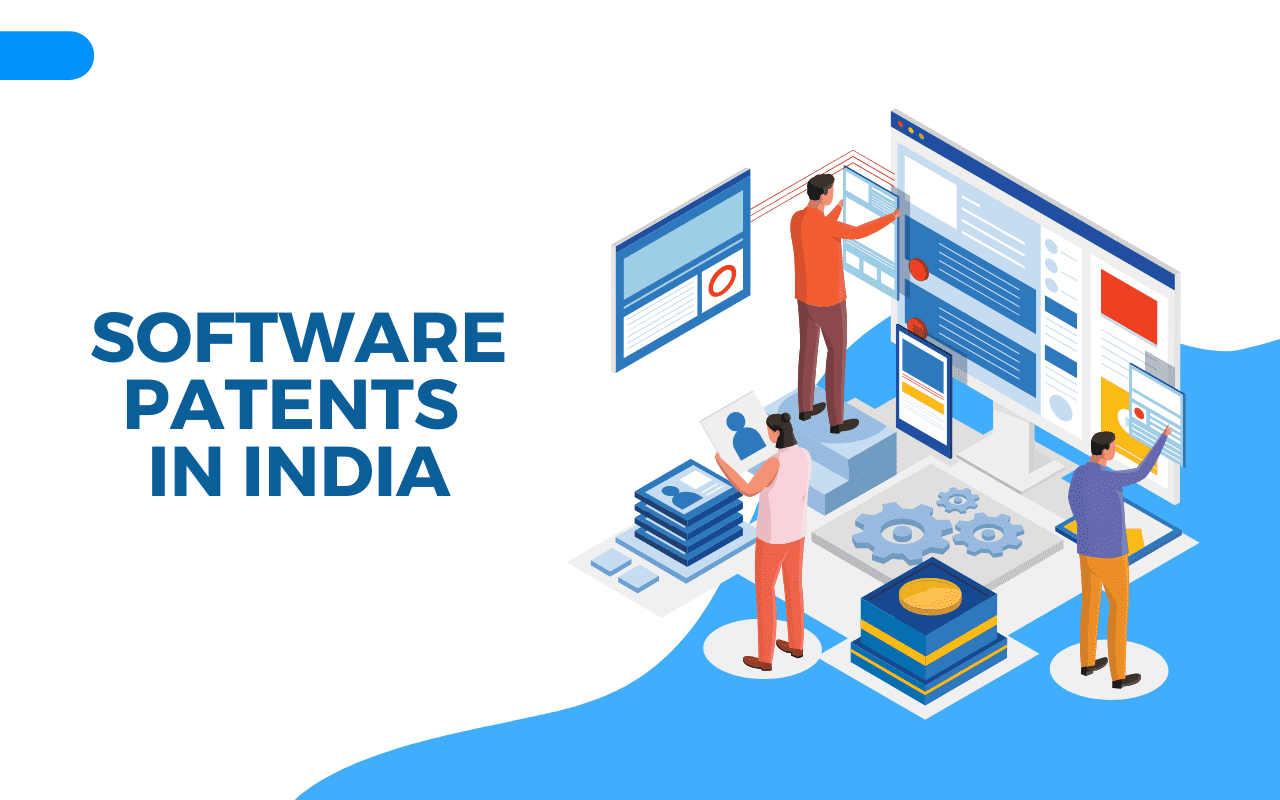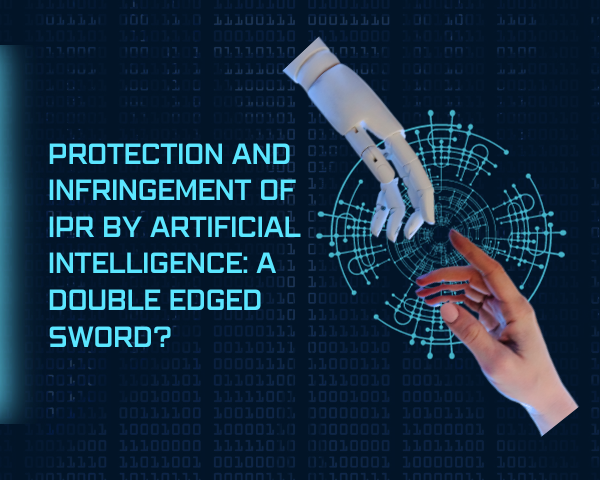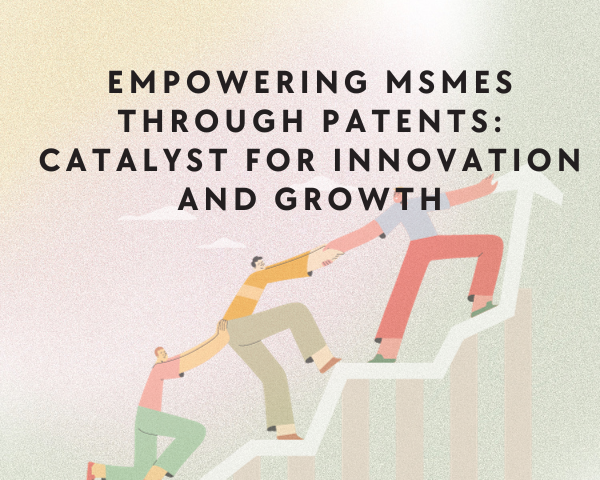Software Patents in India
Innovation is the nudge behind any modern economy’s rise. Inventions, the bedrock of innovation, are focused on productivity. An incentive to invent creates higher productivity, leading to increased goods and services in the market, and ultimately contributing to economic growth.
Thus, it becomes important to protect this creation of the mind. The system of patents enables inventors to protect and control their rights over the use of their inventions.
Today, the world has become increasingly digital. A vast number of things used by us run on coded software and computer technology. Information Technology (IT) has become a large, in-demand industrial sector worldwide. It would, thus, make perfect sense to protect the interests of inventors who contribute to this field through the development of computer technology, computer programmes, and software.
While Indian law grants protection to inventive technology and software through the use of copyright and patent law, here we shall focus on the protection of computer software under the Indian patent law.
The Indian Patents Act 1970 defines an ‘invention’ under Section 2(i)(j) as a new product or process capable of industrial application and involving an inventive step. Thus, any product or process that seeks to be patented must showcase these three requirements for patent registration, including computer software.
What are Software Patents?
It is important to understand what software patents are before we try to understand why software patents are not easily granted under Indian law.
As the word is not defined in any Indian statute, the dictionary meaning of the word is referred to by jurists. In simple terms, it is the program used by a computer for a particular work. A software patent is, thus, a patent on such a computer programme.
However, the problem of patenting software arises from Section 3 of the Patents Act. Section 3 deals with categorizing what cannot be patentable in India. Specifically, Section 3 (k) of the Act of 1970 discusses excluding from the meaning of ‘inventions’ a mathematical or business method or a computer program per se or algorithms.
While Section 3(k) makes it clear that computer programmes (and, by extension, software) cannot be patented, the words ‘per se’, added through the Patents (Amendment) Act, 2002, allow to accommodate certain computer programmes and software as registrable patents.
The intention behind adding the words ‘per se’ can be found in the Joint Parliamentary Committee’s views when they introduced the Patents (Amendment) Act of 2002. According to the Committee, the intention was to provide for patents to those computer programmes which can include certain other things which are ancillary to or developed upon such a computer programme, thus making them eligible to be called patentable inventions.
Guidelines for computer-related inventions
However, ambiguity concerning this section has always existed, even after the various attempts by the Indian Patent Office to explain what is excluded through the application of the section. In 2015, the Patent Office passed a test to determine which computer programmes can be patented. This was the ‘subject matter’ test, requiring the computer programme to be either involved with novel hardware or create a technical effect changing the functionality or performance of the hardware.
The 2017 guidelines by the Patent Office, however, did away with this test. While the test only served to limit the number of possible applications that would be granted software patents, the revocation of the test brought the Patent Office back to interpret the words ‘per se’ to determine which software patent applications can be granted registration. Thus, no clear and unambiguous legislative basis exists on which software can be granted patents, and every such patent application has to be heard on a case-to-case basis.
How can Software be Patented in India?
Section 3(k) definitely sets in place a hurdle to obtaining patents for software. The ambiguous wordings and the failed attempts at explaining the Section through the Patent Office’s various guidelines create a murky road to software patents. Yet, the various judgments of the Indian courts have highlighted a few points to be kept in mind when filing for a successful software patent.
(a) Software is not patentable in itself
If there is clarity regarding any point relating to Section 3(k), it is that computer programmes or software are not patentable by themselves. This means that the software to be patented must show its connection with things ancillary to the invention, such as with a hardware component, or perhaps illustrate a technical effect created due to its application.
The above was noted in the case of Telefonktiebolaget LM Ericsson (Publ) v. Lava International Ltd., which enunciated the non-application of Section 3(k).
The court held that Section 3(k) would come into force when an abstract formula such as an algorithm, which is purely theoretical in nature, is applied to be patented. However, when an algorithm is utilized by hardware components or creates a technological or practical effect to result in a physical realization, such an algorithm can be patented, and the bar under Section 3(k) would not apply. Moreover, the court also stated that the mere mention of an algorithm in a patent document should not be inferred to mean that the invention is nothing more than just that algorithm.
Similarly, in Telefonktiebolaget LM Ericsson (Publ) v. Intex Technologies (India) Ltd., it was held that an invention showcasing a technical effect or giving a technical contribution is not merely a computer programme per se and hence is patentable.
(b) The software need not be a special adoption of any hardware –
For being granted a patent registration, software or a computer programme need not demonstrate that it is inherently novel, non-obvious in itself, or be a special adaptation of existing hardware or any modification of such hardware. The same was held in the case of Accenture Global Service Gmbh v. The Asst. Controller of Patents & Designs & Ors.[10]
In this case, Accenture Global Service Gmbh filed a patent for a system for developing internet-hosted business applications. The Indian Patent Office (IPO) objected to the grant of the patent, citing Section 3(k) of the Patents Act. According to the Patent Office, if the novel features of an invention reside in a programme without any special adoption or modification of the hardware, then the matter is not patentable.
The decision was challenged in the Intellectual Property Appellate Board (IPAB) and the court observed that neither the Patents Act nor the Manual of Patent Office Practice and Procedure (MPPP) prescribed any such guidelines and accordingly remanded the application back to the Controller for reconsideration. Thus, software need not demonstrate a special adoption of hardware to be patented.
(c) Software that is, in essence, a business method cannot be patented –
Software tools that are purely business methods would again not be granted patents. This question arose in the case of Yahoo v Controller of Patents & Rediffcom India Limited.
Yahoo’s claim was for a software tool targeting search terms relevant to Yahoo’s business. However, the IPAB did not accept the patent application and held the same as being a business method embodied in technology. Where technical advances are only a manifestation of a core business method held by the IPAB, such advances shall not give any advantage to the patentee in the allowance of the patent.
(d) The substance of the software patent is to be looked at, not the form –
Looking over at the 2017 guidelines, it is stated in the guidelines that software being applied for a patent as a ‘method’ is to be judged on substance, i.e., the focus should be on the underlying substance of the invention, not the particular form in which it is claimed. Thus, greater importance needs to be placed on the novelty, industrial use, and inventive step used in creating such software rather than on it being a computer programme or algorithm.
The above decision in Lava International Ltd. also reinforces the fact that a software patent cannot merely be dismissed on the fact that such software is, in essence, a computer programme or an algorithm. There also arises a duty on the applicant’s part to state in clear and succinct language the practical effect and/or the definite contribution the invention creates to enable the courts to judge the patent on its substance rather than its form.
(e) An invention displaying a technical effect is patentable despite it being a computer programme –
As the Delhi High Court has noted in the case of Ferid Allani v. Union of India & Ors., most inventions of today are based on computer programmes, such as automobiles, washing machines, and refrigerators. All of these use some sort of computer programmes in-built into them. Thus, if a computer programme is rejected on the mere basis that Section 3(k) presents such a prohibition on patentability, modern-day inventions would lose the right to be patented.
In this case, the court elaborated on the patentability of computer programs even when Section 3(k) poses an obstacle to such patents. The brief facts of the case were that Ferid Allani, the applicant, filed for the patent of “a method and device for accessing information sources and services on the web.” The IPO rejected the patent application under Section 3(k). The matter went to the IPAB, which confirmed the rejection, and thereby to the Delhi High Court through a writ petition.
Firstly, the Court cleared that the bar on patenting is in respect of “computer programs per se” and not all inventions based on computer programs. Noting the prevalence of computer programs in modern products such as ovens, automobiles, and refrigerators, the Court stated that it would be retrograde to state that such inventions are not patentable. If this were the case, inventions such as those based on artificial intelligence, blockchain, and other digital products would not be patentable.
The court further noted that if an invention demonstrates a technical effect or technical contribution, it is patentable even though it may be based on a computer programme. Thus, this case serves as one of the more important judgments when it comes to patenting software in India, as it explicitly clears the air that Section 3(k) is not to be applied to all inventions using computer programmes or software.
Another example
A similar ruling was laid down in the case of Enercon India Ltd. v. Aloys Wobben, where an objection under Section 3(k) was taken to a computer programme invented for better power output through wind turbines. The court, noting that wind turbines cannot be controlled manually and require advanced computer technology for the same, stated that such a computer program carrying out a technical process such as controlling the wind turbine to achieve a maximum power output cannot be called a ‘computer program per se.’ According to the court, such an invention would not fall under the objection arising from Section 3(k) of the Patents Act when the patent claim only comprises some process steps to carry out a technical process or achieve a technical effect.
Conclusion
Today, software definitely plays an important role in the sustenance and development of society. The world runs on various computer software codes, from smartphones and smartwatches to heavy machinery and industrial capital. As such, it becomes increasingly important to protect and promote inventors’ rights concerning software creation through a stronger patent enforcement system.
Indian courts have definitely risen to the idea of allowing software to be patented. This article attempted to define and lay down how software patents can be protected in India through the various decisions of our courts. Today, we have settled judicial precedents informing us about the patentability of computer programmes or software. Future courts’ judgments will help solidify a clearer interpretation of Section 3(k) and its applicability to software and computer programmes.




